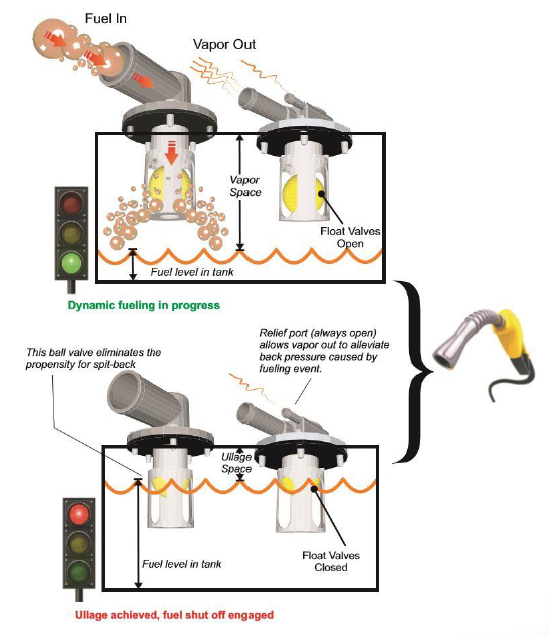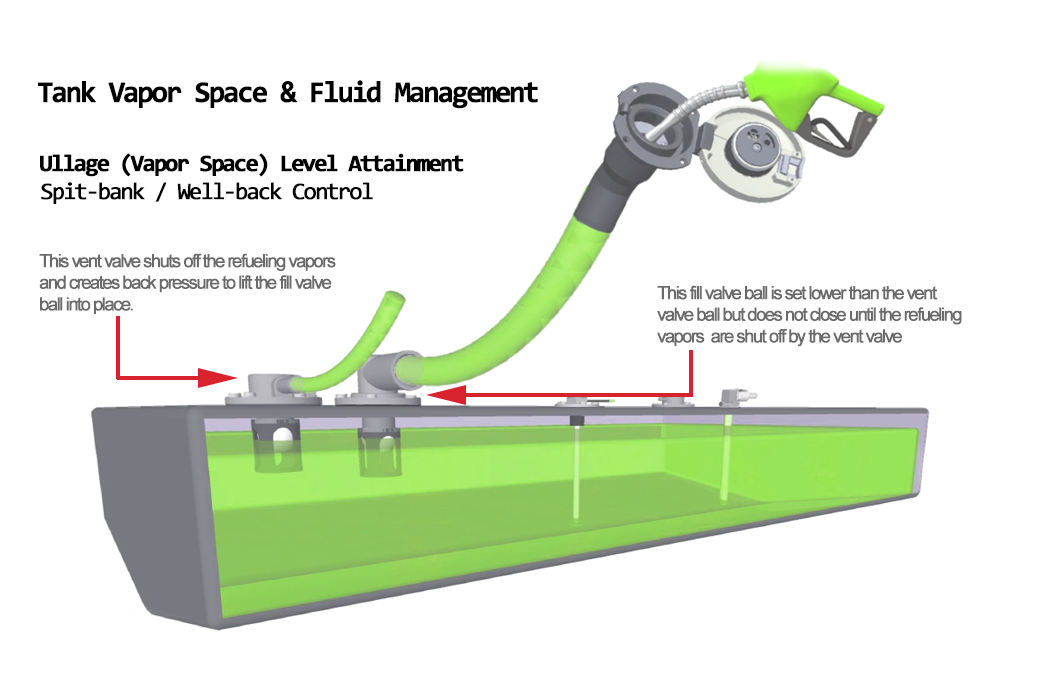Over the past decade, requirements have been introduced to regulate marine fuel tanks to reduce their atmospheric emissions. These regulations though good for the environment have caused considerable issues for both boat owners and marine manufacturers alike. The largest issue is that owner’s are unable to completely fill a vessel’s fuel tank to the published or labeled capacities. The reason for this issue directly relates to the adoption and limitations of EPA’s approved Diurnal Fuel Systems.
EPA Diurnal Fuel Systems
What is a Diurnal Fuel System?
Your boat’s fuel tank is required to have positive pressure (>1PSI) as the sun heats the vessel and the fuel in the tank expands. As such, the installed valves inside are designed to:
- Produce a clean refueling shut off event
- Create a 5% vapor space
- Reduce the propensity of a refueling spit-back event
- Allow for appropriate venting when the vessel is stored or on a trailer. Your fuel cap also contains valves designed to retain fuel vapor (up to 1PSIG) and to allow make up air during engine operation
As a result, your fuel tank will have a varying capacity from the label or published capacity no less than 5% and up to 10% dependent upon the variation from static float due to equipment, and occupants, etc.
For example:
If your fuel tank has an approximate capacity of 68 gallons, you might experience a variance in total capacity of 64.6 to 61.2 gallons.
Note: Owners should only open the fuel cap for refueling. Pressure may be present when opening your deck fill, regardless of system type. The first time fuel is introduced to the a fuel tank, be aware of the interaction of cold raw fuel vapors replacing air, on occasion a vapor pressure can occur producing spit-back anomalies.
Further Troubleshooting
Should you experience a larger variance we recommend consulting your dealer to determine to check your fuel guage or fuel sender are operating correctly.
Warranty Warning:
Topping off will override your fuel system design intent and could cause damage to your vessel due to overflow and will void any and all warranty claims related to fuel spillage. BlueSkies is expressly not responsible for any damage to your vessel subsequent to topping off.

